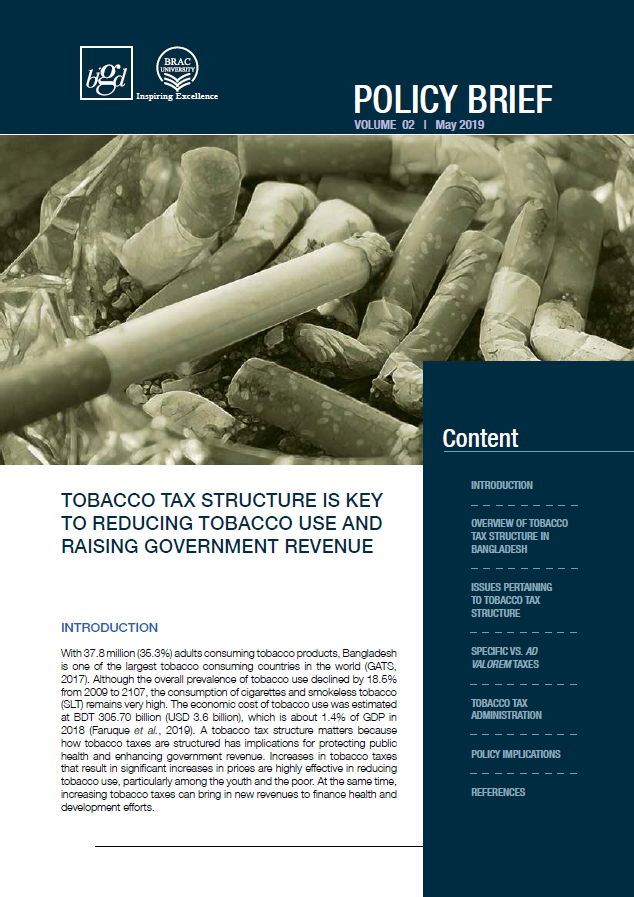Tobacco Tax Structure is Key to Reducing Tobacco Use and Raising Government Revenue
INTRODUCTION
With 37.8 million (35.3%) adults consuming tobacco products, Bangladesh is one of the largest tobacco consuming countries in the world (GATS, 2017). Although the overall prevalence of tobacco use declined by 18.5% from 2009 to 2107, the consumption of cigarettes and smokeless tobacco (SLT) remains very high. The economic cost of tobacco use was estimated at BDT 305.70 billion (USD 3.6 billion), which is about 1.4% of GDP in 2018 (Faruque et al., 2019). A tobacco tax structure matters because how tobacco taxes are structured has implications for protecting public health and enhancing government revenue. Increases in tobacco taxes that result in significant increases in prices are highly effective in reducing tobacco use, particularly among the youth and the poor. At the same time, increasing tobacco taxes can bring in new revenues to finance health and development efforts.

This policy brief was prepared by the BRAC Institute of Governance and Development, BRAC University (BIGD), in Dhaka, Bangladesh. The brief discusses research by the think tank about the role of tobacco tax structures in reducing tobacco use and raising government revenue. With 37.8 million (35.3%) of adults in Bangladesh consuming tobacco products, they are one of the largest tobacco consuming countries in the world.